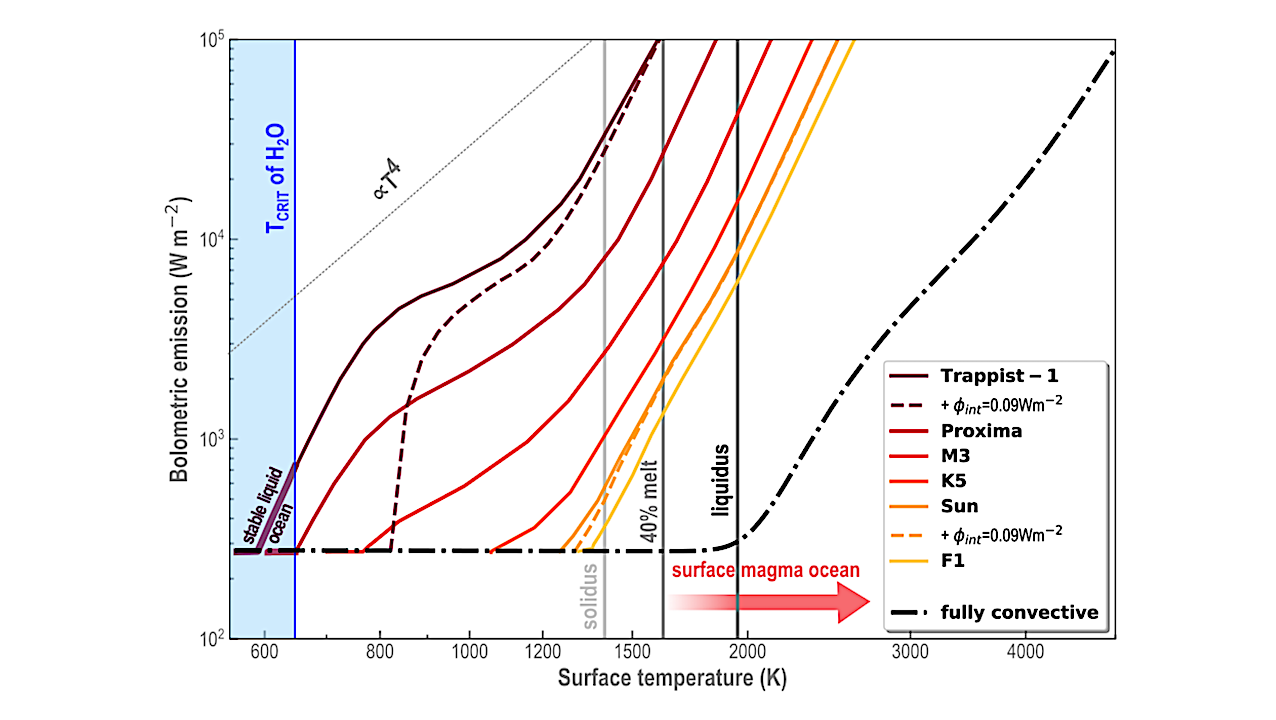A Cool Runaway Greenhouse Without Surface Magma Ocean

Water vapour atmospheres with content equivalent to the Earth’s oceans, resulting from impacts or a high insolation, were found to yield a surface magma ocean. This was, however, a consequence of assuming a fully convective structure.
Here we report, using a consistent climate model, that pure steam atmospheres are commonly shaped by radiative layers, making their thermal structure strongly dependent on the stellar spectrum and internal heat flow. Yhe surface cooler when an adiabatic profile is not imposed: melting Earth’s crust requires an insolation several times higher than today, which will not happen during the main-sequence of the Sun. Venus’ surface can solidify before the steam atmosphere escapes, which is opposite to previous works.
Around the reddest stars (Teff<3000K), surface magma oceans cannot form by stellar forcing alone, whatever the water content. These findings affect observable signatures of steam atmospheres and exoplanet mass-radius relationships, drastically changing current constraints on the water content of Trappist-1 planets. Unlike adiabatic structures, radiative-convective profiles are sensitive to opacities. New measurements of poorly constrained high-pressure opacities, in particular far from the H2O absorption bands, are thus necessary to refine models of steam atmospheres, which are important stages in terrestrial planet evolution.
Franck Selsis, Jérémy Leconte, Martin Turbet, Guillaume Chaverot, Émeline Bolmont
Comments: 23 pages, 3 figures in the main text, 6 figures and 1 table in the Methods. Received 14 July 2022; Accepted 24 May 2023; Published 09 August 2023
Subjects: Earth and Planetary Astrophysics (astro-ph.EP)
Cite as: arXiv:2311.08444 [astro-ph.EP] (or arXiv:2311.08444v1 [astro-ph.EP] for this version)
Journal reference: Nature, volume 620, pages 287-291, 2023
Related DOI:
https://doi.org/10.1038/s41586-023-06258-3
Focus to learn more
Submission history
From: Franck Selss
[v1] Tue, 14 Nov 2023 18:30:50 UTC (2,022 KB)
https://arxiv.org/abs/2311.08444
Astrobiology








